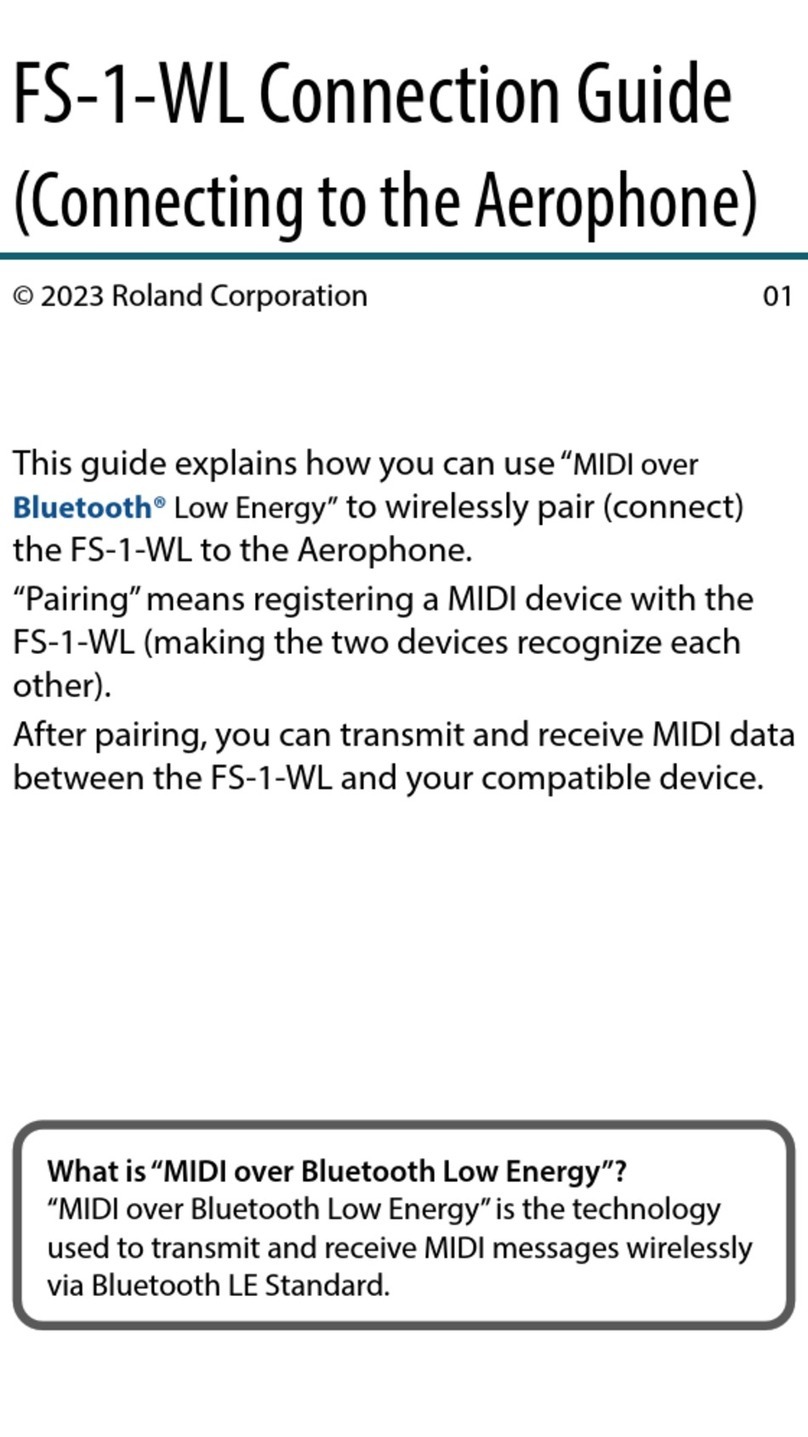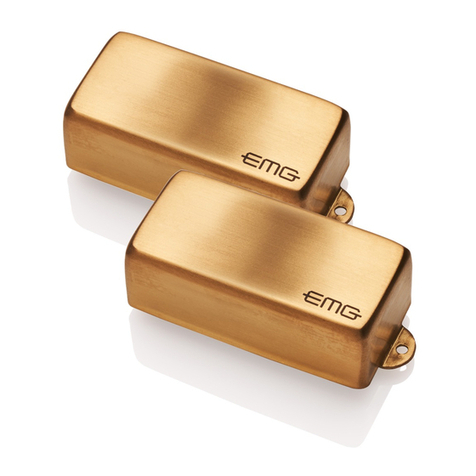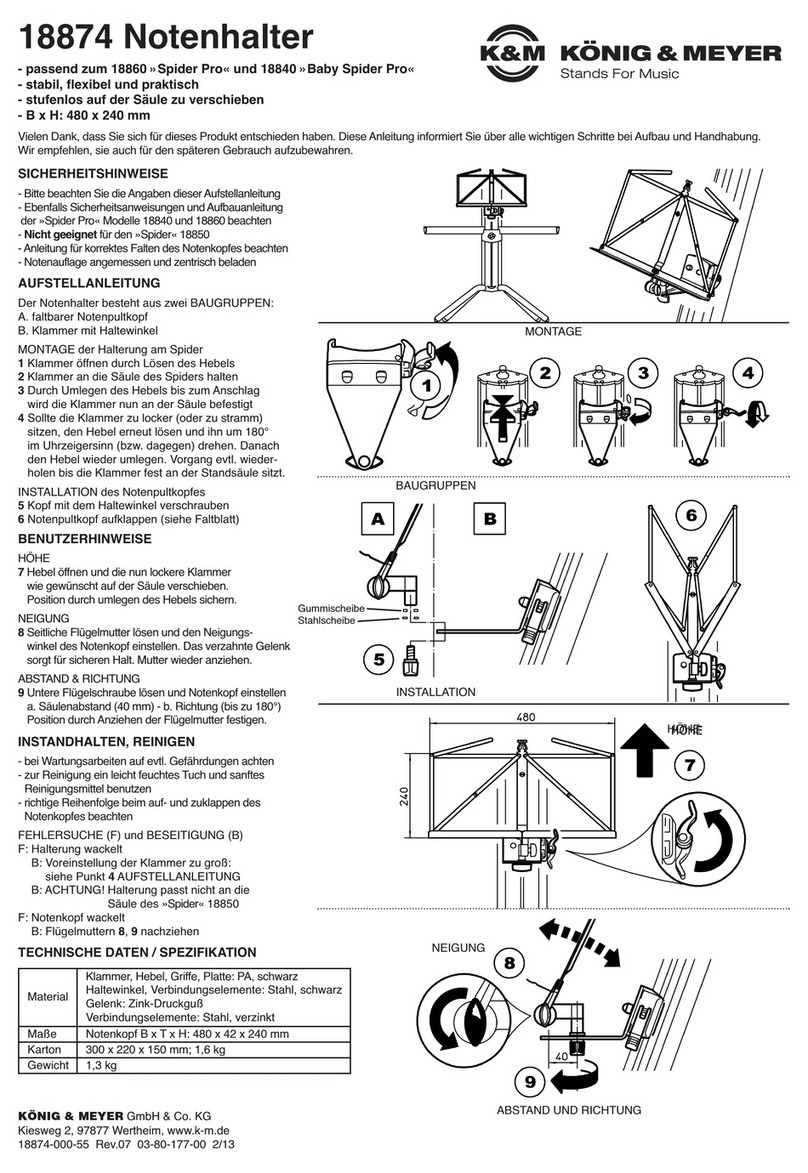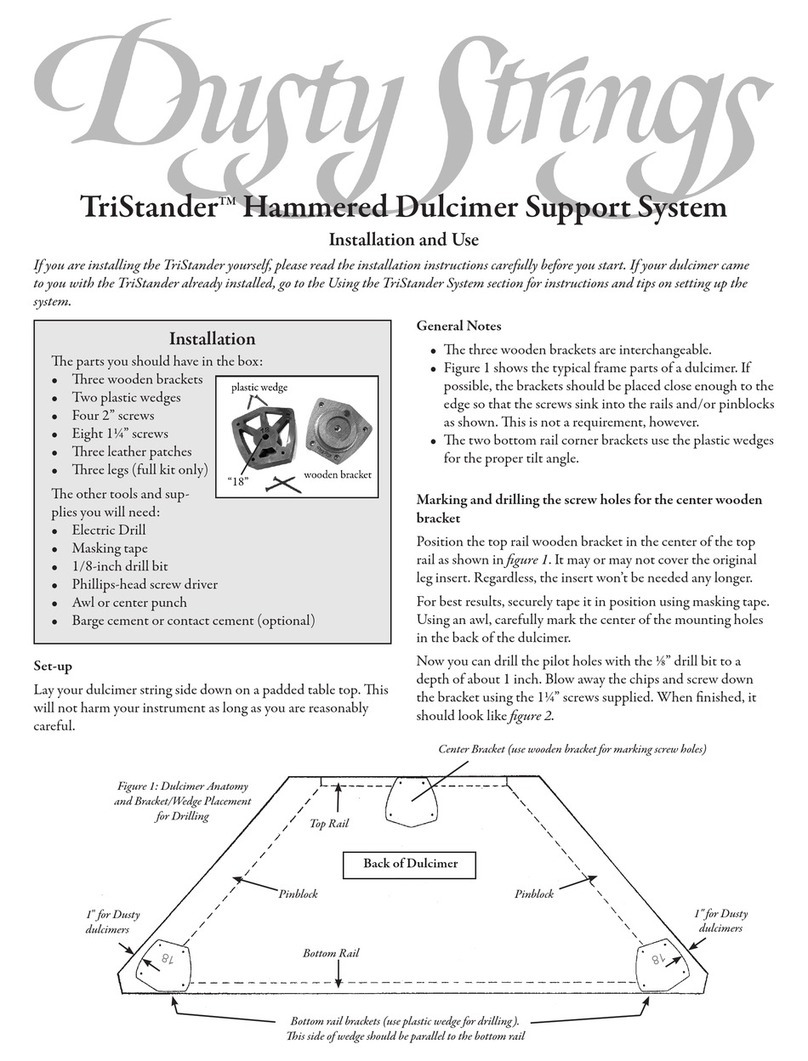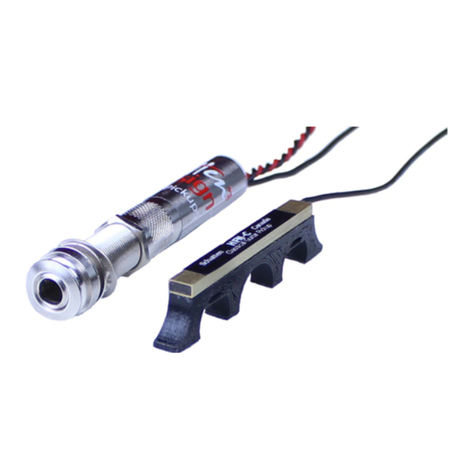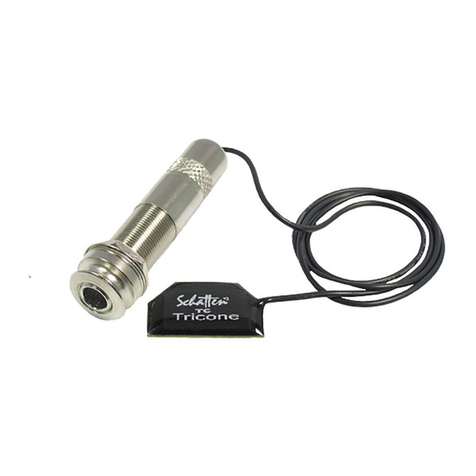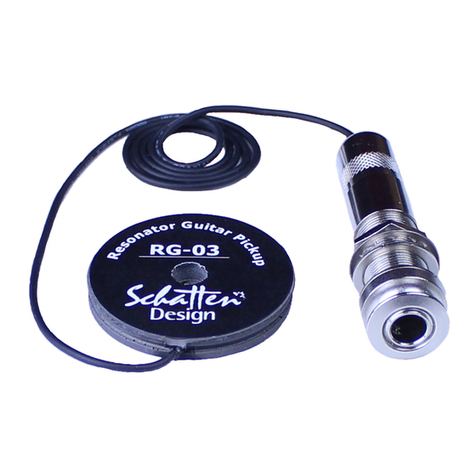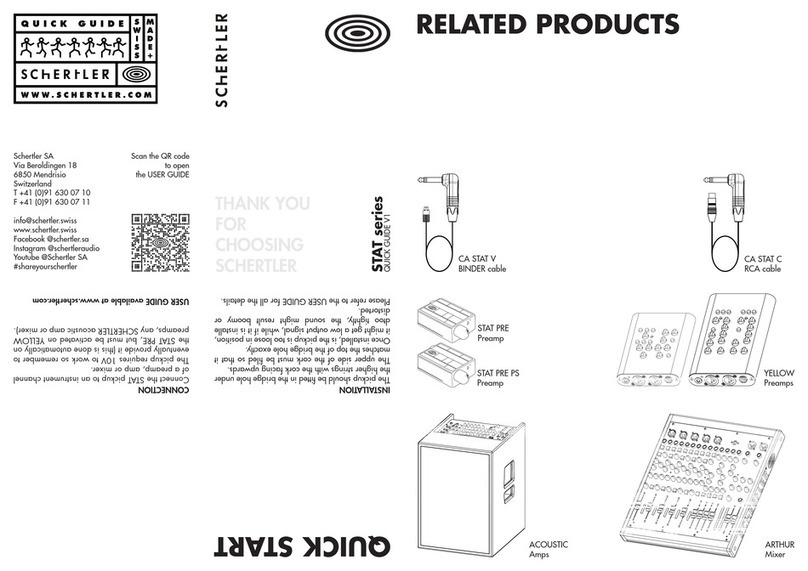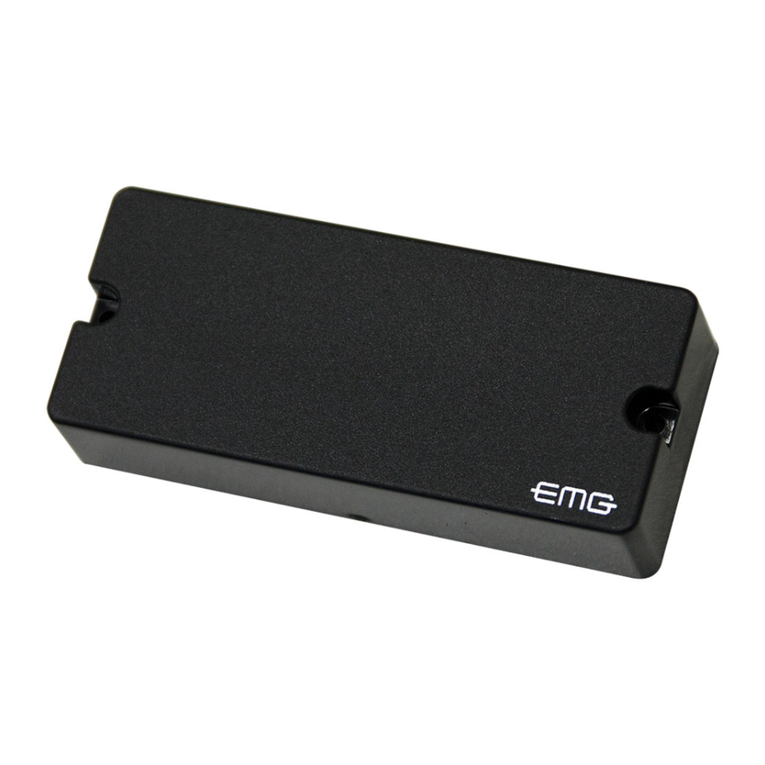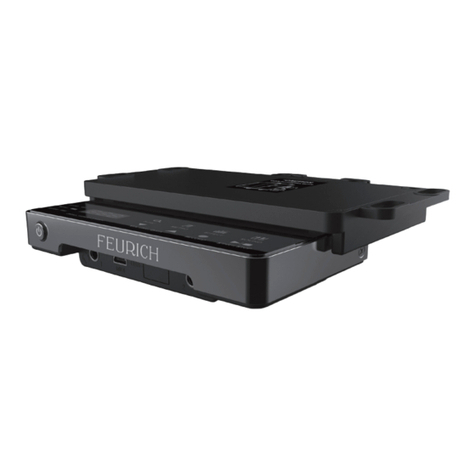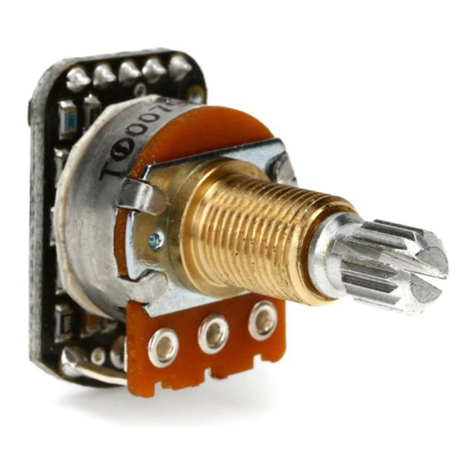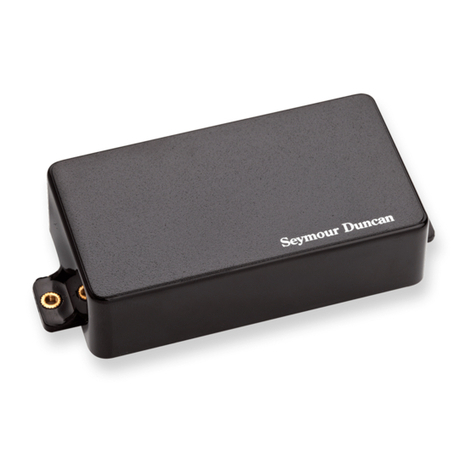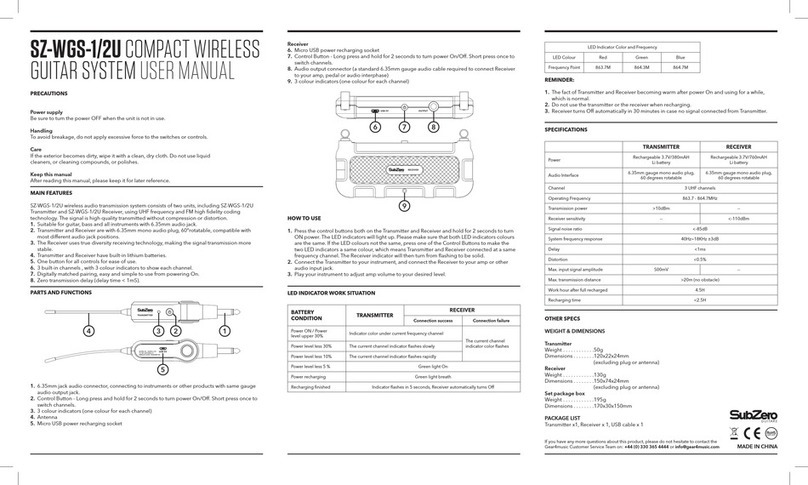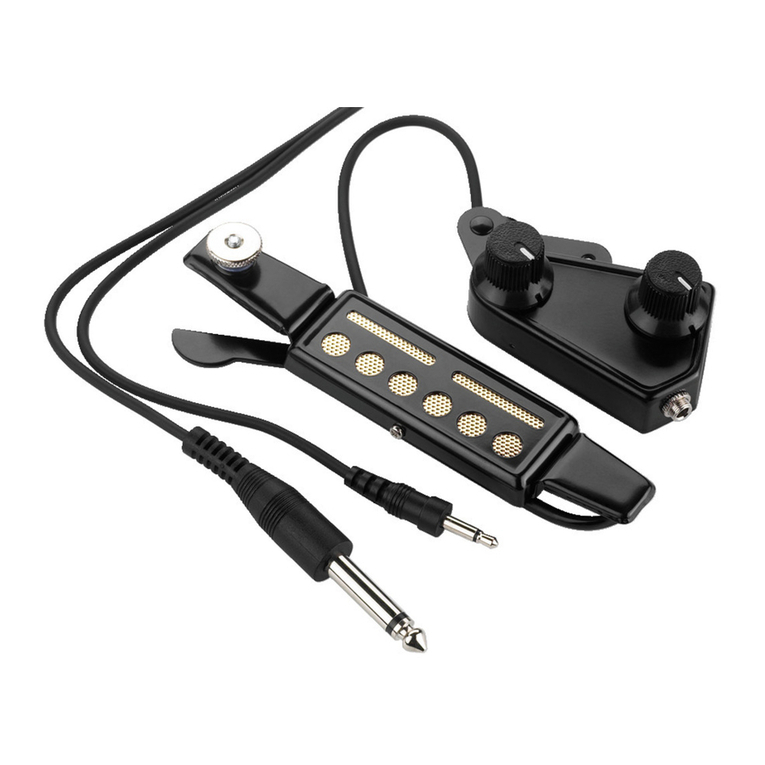
fig 1
627 Colby Drive Waterloo, Ontario Canada N2V1B4
877-633-0177 519-742-3862 fax 519-742-1843
www.schattendesign.com tech@schattendesign.com
Instructions For The RG-03 Neo - Pickup For Spider Bridged Instruments
Starting Installation Tools required: electric hand drill, 11/64" drill bit, assorted screw drivers, an old guitar string or a bit of thin wire, piece of tape.
1) Slack off the strings, remove them from the tailpiece and tape them away from the cover plate. Remove the cover plate screws and set the cover plate aside.
Remove the tailpiece and resonator cone complete with the spider bridge and set the rest of the guitar aside.
2) Remove the screw that connects the spider bridge to the resonator cone. There are two replacement screws provided, one is a 3 mm. metric, the other is a
4-40. Check to see which of the two screws fits your resonator cone properly. The correct screw should thread in very easily, do not force it. Also, make sure that
the head of the replacement screw fits into the saddle slot properly. If the screw head is too large to fit in the slot, grind off or file away whatever small amount of
the head diameter is necessary to make it fit in the slot properly. Once the screw is properly fitted, use it to snugly attach the spider to the cone.
3) It is suggested that at this point you reinstall the cone with the spider and saddles into the dobro (leave the cover plate off), reinstall the strings, tune the
instrument and tighten the machine screw that connects the spider to the cone so that the sound and response is set to original levels. When this is done,
remove the strings, set the cone and spider assembly on your workbench and set the rest of the instrument aside.
Installing the Pickup Element
The RG-03 sensor is not meant to come into direct contact with any part of the cone. The putty that is supplied with the
pickup acts as both a means of attachment and as an isolator; there always has to be a bead of putty between the contacting
surface of the sensor and the wall of the resonator cone. The sensor is meant to contact the sidewall of the only.
1) Place the pickup on your workbench with the brass side facing up. From the supply of putty provided, run a single bead
around the outside of the diameter of the brass so that the putty covers only the colored potting material outboard of the
brass. This bead should be about 1/4" in diameter. If possible, no putty should be on the brass surface. See fig 1 Note: On
some cones, such as a Quarterman, the cone has a much steeper slope than is normal. In order for the pickup to not come
into direct contact with the cone, the putty must be moved further outboard than normal so that it is partly on the edge of the
pickup and partly on the underside. See the illustrations below:
2) Place the small length of rubber tubing over the already installed cone mounting screw. Slide the tubing
down as close to the cone as you can. The tubing has two functions: it acts as a damper and it isolates the
pickup from coming into contact with the mounting screw.
3) With the putty and brass side towards the cone, install the pickup by centering the pickup over the
mounting screw and sliding the pickup over the rubber tubing and just allowing the putty to come into contact
with the underside of the cone.
4) The rubber tubing is supplied longer than is necessary so that it will fit all installations. We want the tubing
to stick up above the pickup by about 1/8". Take a pen and draw a line on the tubing at a point 1/8" above the
top of the pickup. Remove the tubing and cut on that line. Reinstall the tubing on the mounting screw making
sure to get it down as close to the bottom of the mounting screw as before. Reinstall the pickup. See fig 2
5) Place the small washer, and then the appropriate nut on the cone mounting screw. Tighten the nut down
until the putty starts to compress. Then tighten the nut down another 2 or 3 turns. Over compression of the
putty or allowing the pickup itself to come into contact with the cone surface will make the pickup trebly and
extremely harsh. fig 2

